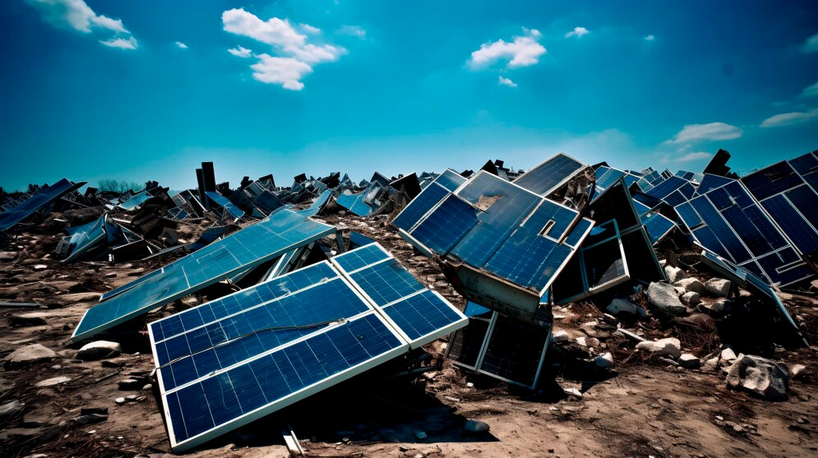Solar panels have become a symbol of our commitment to sustainable energy sources and combating climate change. They convert sunlight into electricity and have been embraced by homeowners, businesses, and governments worldwide. However, like all technologies, solar panels have a finite lifespan, and eventually, they need to be decommissioned and replaced. Solar panel decommissioning is an essential part of the solar energy lifecycle, ensuring both environmental responsibility and efficiency. In this comprehensive guide, we will demystify the process of decommissioning solar panel, step by step.
Understanding Solar Panel Decommissioning
Solar panel decommissioning refers to the systematic process of safely removing and disposing of solar panels that have reached the end of their operational life, are no longer functioning correctly, or need to be upgraded. While solar panels are designed to last for decades, they eventually degrade in performance and efficiency, necessitating decommissioning.
Why Solar Panel Decommissioning Matters
Solar panel decommissioning is essential for several reasons:
Efficiency and Performance: As solar panels age, they become less efficient in converting sunlight into electricity. Decommissioning allows for the removal of underperforming panels and their replacement with newer, more efficient models.
Technological Advancements: Solar technology is continually evolving, leading to more efficient and cost-effective solar panels. Decommissioning older panels enables the adoption of newer, more advanced technologies, which can improve energy generation and reduce costs.
Environmental Responsibility: Solar panels contain materials such as silicon, glass, and metals, which can be harmful to the environment if not properly disposed of. Decommissioning ensures the safe disposal or recycling of these materials, minimizing their environmental impact.
Economic Benefits: Recycling and repurposing materials from decommissioned solar panels can have economic benefits by reducing the need for virgin resources and lowering manufacturing costs.
The Solar Panel Decommissioning Process
Solar panel decommissioning involves a series of steps:
Assessment: The first step is to assess the condition of the solar panels. This includes evaluating their performance, age, and any physical damage. Assessments help determine whether decommissioning is necessary or if maintenance and repairs can extend the panel's lifespan.
Planning: Once the decision to decommission is made, a comprehensive decommissioning plan is developed. This plan outlines the scope of work, timeline, budget, and disposal methods.
Dismantling: Solar panels are carefully dismantled, starting with the removal of electrical connections and supports. The panels are then detached from their mounting systems.
Recycling and Disposal: After dismantling, the components are sorted for recycling or disposal. Materials such as glass, aluminum, and silicon can be recycled, while hazardous materials are disposed of following environmental regulations.
Site Restoration: If the solar panels were installed on the ground, site restoration involves returning the area to its original state. This may include removing concrete foundations and landscaping.
Documentation: Proper documentation is crucial throughout the decommissioning process. This includes records of assessments, dismantling procedures, recycling/disposal methods, and compliance with environmental regulations.
Environmental Considerations in Solar Panel Decommissioning
Environmental responsibility is a significant aspect of solar panel decommissioning. To minimize the environmental impact, consider the following:
Recycling: Whenever possible, recycle materials from decommissioned solar panels. Silicon, glass, and metals can be reclaimed and reused in the manufacturing process, reducing the need for virgin resources.
Hazardous Waste Management: Properly manage hazardous materials, such as cadmium in thin-film solar panels. Ensure compliance with local and national regulations for hazardous waste disposal.
E-Waste Regulations: Many countries have specific regulations governing the disposal of electronic waste (e-waste). Ensure compliance with these regulations when disposing of decommissioned solar panels.
Minimizing Energy Use: Implement energy-efficient methods during decommissioning to minimize the carbon footprint of the process.
The Economics of Solar Panel Decommissioning
While solar panel decommissioning is primarily driven by environmental concerns, it also has economic implications. Consider the following economic aspects:
Recycling Savings: Recycling materials from decommissioned solar panels can result in cost savings by reducing the need for raw materials in the manufacturing process.
Tax Incentives: Some regions offer tax incentives or subsidies for proper disposal and recycling of solar panels. Research local incentives to maximize financial benefits.
Replacement Efficiency: Decommissioning older panels and replacing them with more efficient models can lead to increased energy generation and reduced energy costs, improving the return on investment.
Conclusion
Solar panel decommissioning is an essential part of the solar energy lifecycle, ensuring sustainability, efficiency, and environmental responsibility. As solar technology continues to advance, it is crucial for individuals and businesses to prioritize not only the installation and maintenance of solar panels but also their eventual decommissioning. By doing so, we can harness the full potential of solar energy while mitigating its environmental impact, ultimately contributing to a cleaner and more sustainable future.





Comments